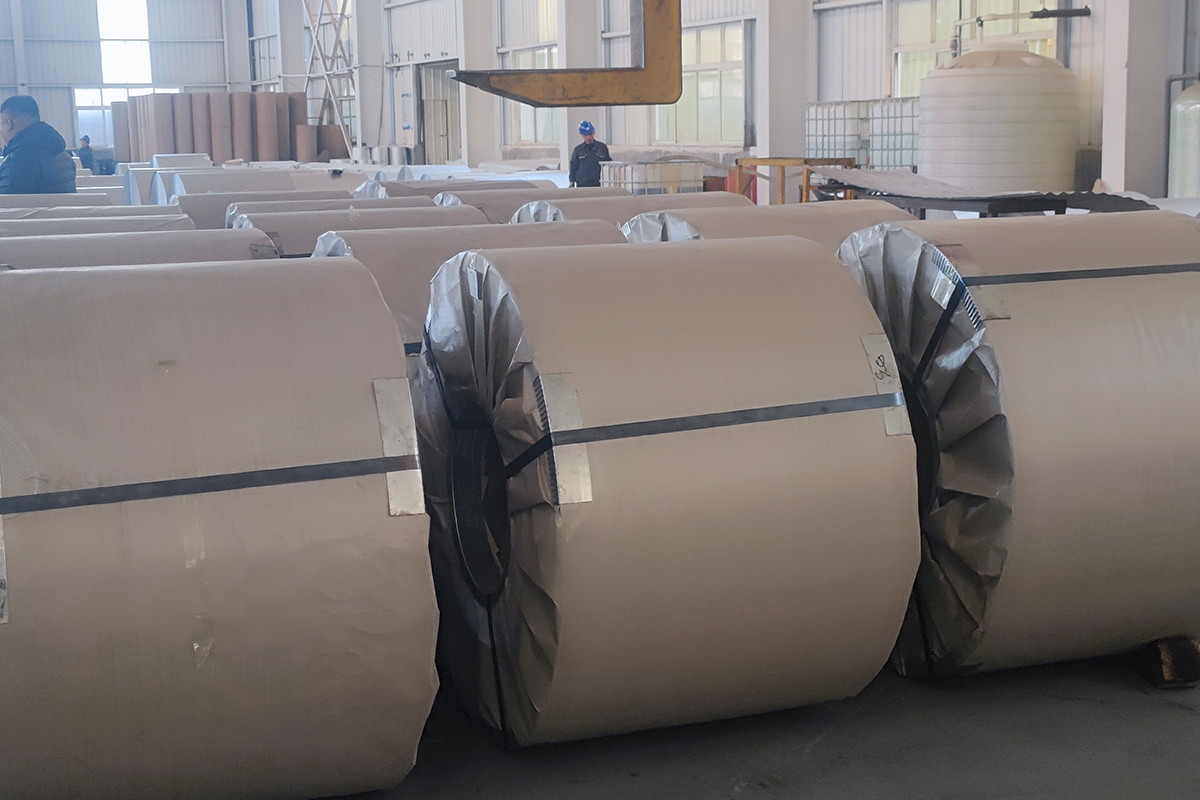
Galvanized Steel: Unleashing Potential in the Circular Economy
In the age of rapid industrial transformation and heightened environmental awareness, galvanized steel has emerged as a linchpin in the global push towards a circular economy. Far beyond its traditional role as a corrosion-resistant material, it is now at the forefront of innovation, driving sustainability across multiple sectors through groundbreaking technologies and novel applications.
 One of the most significant advancements lies in the realm of nanotechnology integration. Researchers are developing galvanized steel with nanoscale zinc coatings, leveraging atomic – layer deposition techniques to create layers as thin as 100 nanometers. These ultra – thin coatings not only reduce zinc consumption by up to 60% compared to conventional methods but also enhance corrosion resistance. The nanocrystalline structure of these coatings forms a more compact and uniform barrier, significantly slowing down the ingress of moisture and corrosive agents. For example, in coastal industrial zones, where traditional galvanized steel may start to show signs of corrosion within 5 – 8 years, steel with nanoscale zinc coatings has demonstrated a lifespan of over 20 years. This breakthrough not only extends the service life of steel products but also reduces the frequency of replacements, thereby minimizing waste generation.
One of the most significant advancements lies in the realm of nanotechnology integration. Researchers are developing galvanized steel with nanoscale zinc coatings, leveraging atomic – layer deposition techniques to create layers as thin as 100 nanometers. These ultra – thin coatings not only reduce zinc consumption by up to 60% compared to conventional methods but also enhance corrosion resistance. The nanocrystalline structure of these coatings forms a more compact and uniform barrier, significantly slowing down the ingress of moisture and corrosive agents. For example, in coastal industrial zones, where traditional galvanized steel may start to show signs of corrosion within 5 – 8 years, steel with nanoscale zinc coatings has demonstrated a lifespan of over 20 years. This breakthrough not only extends the service life of steel products but also reduces the frequency of replacements, thereby minimizing waste generation.Another area of innovation is the development of galvanized steel for energy – efficient infrastructure. In the construction of green buildings, galvanized steel is being used in advanced insulation systems. Specialized galvanized steel frames are designed to integrate seamlessly with high – performance insulation materials, creating a thermal break that reduces heat transfer. This results in buildings that require less energy for heating and cooling, contributing to significant carbon emissions reduction. A case study in Scandinavia showed that buildings constructed with such galvanized steel – based insulation systems achieved an energy efficiency improvement of 35% compared to standard buildings.
In the transportation sector, galvanized steel is playing a crucial role in the development of sustainable rail systems. Rail tracks made from high – strength galvanized steel alloys can withstand heavy loads and constant friction, reducing the need for frequent replacements. Additionally, the recyclability of galvanized steel ensures that at the end of the track’s life cycle, the materials can be efficiently recycled and reused. In countries like Germany, which has an extensive rail network, the use of galvanized steel in track construction has led to a 20% reduction in maintenance costs over a 10 – year period.
 The marine industry has also witnessed a revolution with galvanized steel. Offshore wind farms, a rapidly growing source of renewable energy, rely on galvanized steel for their foundation structures. These structures must endure harsh marine environments, including saltwater corrosion, strong currents, and extreme weather conditions. Galvanized steel, with its excellent corrosion – resistant properties, provides the necessary durability. Some offshore wind farms use hybrid galvanized steel structures, combining traditional hot – dip galvanized components with advanced composite materials. This hybrid approach not only enhances the strength and stability of the structures but also reduces their overall weight, leading to lower installation costs. For instance, a recent offshore wind project in the North Sea saw a 15% reduction in installation time and a 12% decrease in material costs by using such hybrid galvanized steel structures.
The marine industry has also witnessed a revolution with galvanized steel. Offshore wind farms, a rapidly growing source of renewable energy, rely on galvanized steel for their foundation structures. These structures must endure harsh marine environments, including saltwater corrosion, strong currents, and extreme weather conditions. Galvanized steel, with its excellent corrosion – resistant properties, provides the necessary durability. Some offshore wind farms use hybrid galvanized steel structures, combining traditional hot – dip galvanized components with advanced composite materials. This hybrid approach not only enhances the strength and stability of the structures but also reduces their overall weight, leading to lower installation costs. For instance, a recent offshore wind project in the North Sea saw a 15% reduction in installation time and a 12% decrease in material costs by using such hybrid galvanized steel structures.In the realm of waste management, galvanized steel is being utilized in the construction of recycling facilities. The durability and resistance to wear and tear of galvanized steel make it an ideal material for the construction of conveyor belts, sorting machinery, and storage containers in recycling plants. These components can withstand the constant abrasion and impact from recycled materials, ensuring the long – term operation of the facilities. Moreover, when these facilities reach the end of their service life, the galvanized steel components can be recycled, closing the material loop.
 The circular economy model also benefits from the development of digital technologies related to galvanized steel. Digital twins are being used to monitor the performance of galvanized steel structures in real – time. By collecting data on factors such as temperature, humidity, and stress, engineers can predict the degradation of galvanized steel components accurately. This enables proactive maintenance, reducing the risk of sudden failures and extending the lifespan of the structures. In large – scale infrastructure projects, such as bridges, the use of digital twin technology has been shown to increase the service life of galvanized steel components by up to 30%.
The circular economy model also benefits from the development of digital technologies related to galvanized steel. Digital twins are being used to monitor the performance of galvanized steel structures in real – time. By collecting data on factors such as temperature, humidity, and stress, engineers can predict the degradation of galvanized steel components accurately. This enables proactive maintenance, reducing the risk of sudden failures and extending the lifespan of the structures. In large – scale infrastructure projects, such as bridges, the use of digital twin technology has been shown to increase the service life of galvanized steel components by up to 30%.As the world continues to strive for a more sustainable future, galvanized steel will undoubtedly play an increasingly important role. Its ability to combine durability, recyclability, and adaptability to new technologies makes it an essential material in the circular economy. From nanoscale coatings to energy – efficient applications, from transportation infrastructure to waste management, galvanized steel is constantly evolving, driving innovation and contributing to a more resource – efficient and environmentally friendly world. The journey of galvanized steel in the circular economy is just beginning, and with continuous research and development, its potential for sustainable growth seems limitless.





